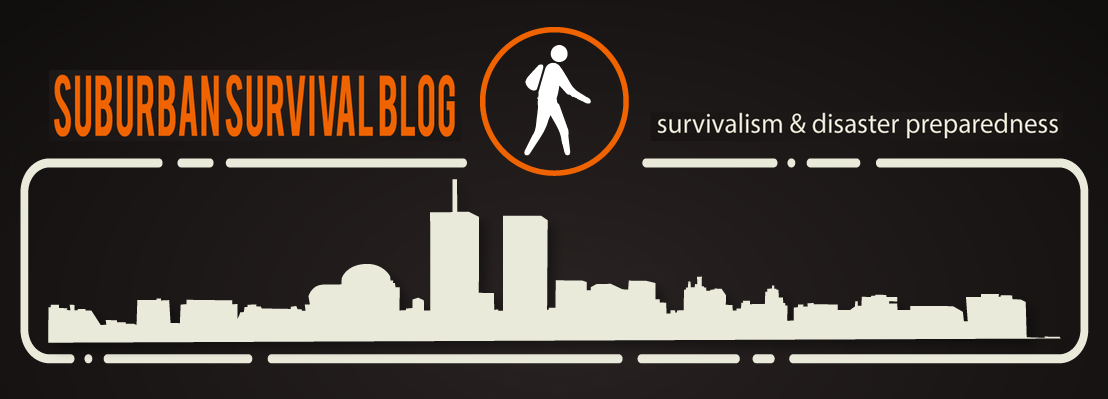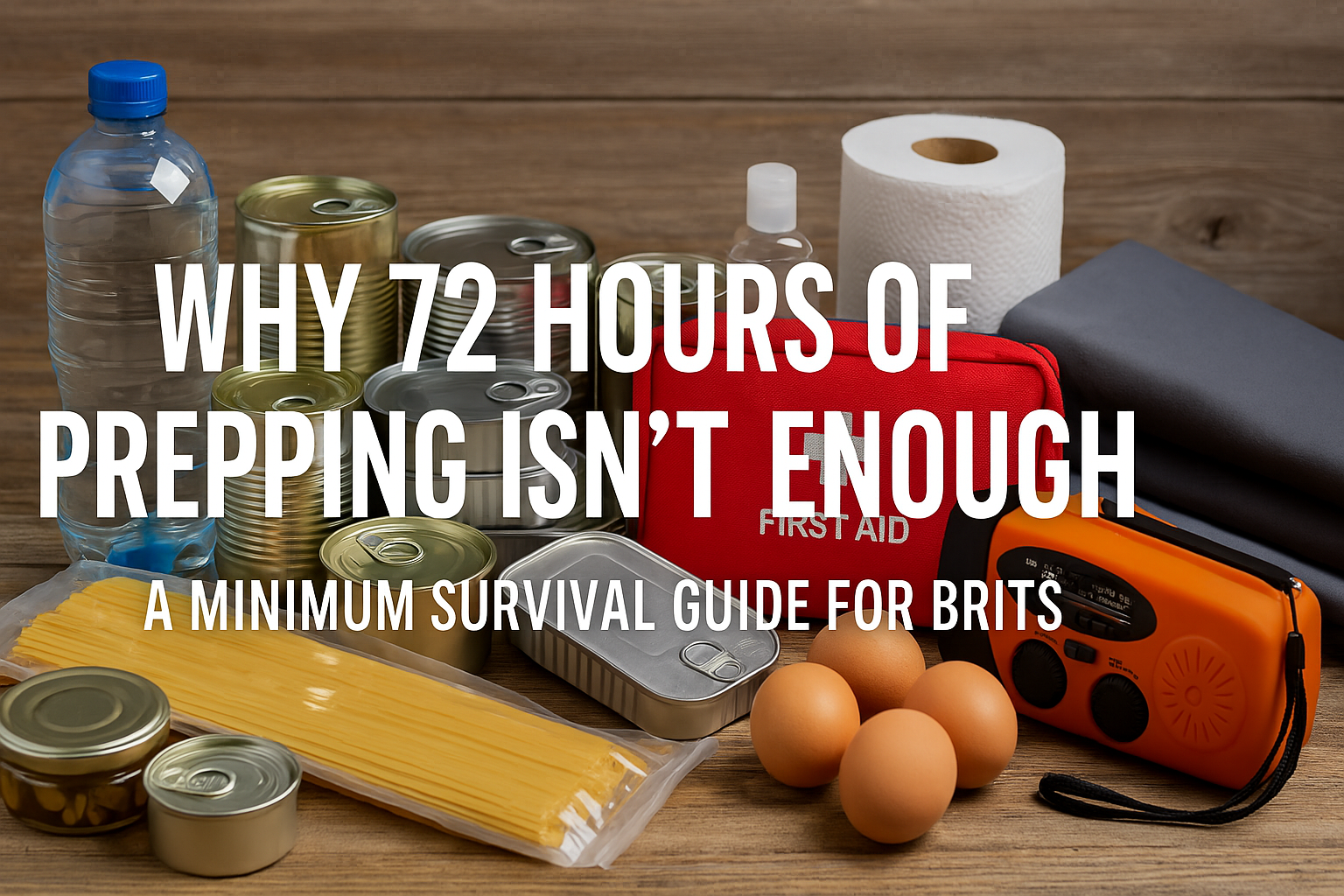 The concept of bugging out is one that I’ve clearly been familiar with, and I assume you are too… Many preppers like myself have fantasized that we would have to leave our home and hoof it, jump in the bug out vehicle, etc to our bug out location. Even during Hurricane Sandy, I sheltered in, and had no power for seven (7) days, when I was living in northern New Jersey.
The concept of bugging out is one that I’ve clearly been familiar with, and I assume you are too… Many preppers like myself have fantasized that we would have to leave our home and hoof it, jump in the bug out vehicle, etc to our bug out location. Even during Hurricane Sandy, I sheltered in, and had no power for seven (7) days, when I was living in northern New Jersey.
As a suburbanite less than an hour’s drive from NYC, the idea of having to leave my home in case of an emergency doesn’t really seem a little far-fetched. It’s always been speculated during a SHTF, the zombies from NYC would make their way through the bridges & tunnels looking for a better life when support doesn’t arrive or when it runs out. In fact, the COVID-19 scare has proven this. The population where I live near the NJ shore is skyrocketing, $800,000 townhomes are going up left and right, and the conscious zombies from NYC, and Northern NJ moved down here and are continuing to, since the COVID-19 threat started everyone sitting home in their 500 square foot apartments. The population in Northern NJ is the reason Mrs. Prepper and I moved south to begin with. The mini COVID-19 wanna-be SHTF, was controlled by draconian lockdowns which got people migrating and are continuing to migrate due to high crime, the promise of a better lifestyle, etc.
We live just a couple miles from a naval weapons station, and there are a number of military bases nearby, since we are by the ocean. Whether the disaster is man made or natural, we need a plan. And while we have one, it’s worth noting it could always use refining and improvement.
The more I think about sheltering in, and the more the population increases, the more Bugging Out is a higher option than sheltering in if the SHTF and we’re in a WROL situation. And if WROL becomes the norm after a couple of weeks, it’s going to be critical to identify this, and to get out prior to a WROL situation becoming the norm. The longer one waits, the more precarious the Bug Out situation becomes.
It’s important to realize that disasters can strike anywhere, and having a bug out strategy is crucial for surviving such situations. In this blog post, I will walk you through every aspect of planning as I see it, and build a safe bug out strategy from the suburbs, including identifying potential threats, factors to consider, essential gear and supplies, choosing a bug out location, transportation options, communication plan, practice and drills, common mistakes to avoid, and more.
Understanding the Concept of Bug Out
Before we dive into the specifics of planning a bug out strategy, let’s first understand what it means to “bug out.” Simply put, “bugging out” refers to leaving your home or current location in the event of an emergency or disaster. We see this all the time in the movies. This could be due to a natural disaster, civil unrest, or any other situation that poses a threat to your safety.
The idea behind bugging out is to have a well designed plan in place ahead of time so that you can evacuate quickly and safely. This means having the necessary gear and supplies ready to go, as well as a predetermined bug out location and transportation options.
Importance of Planning a Safe Bug Out Strategy
Having a bug out strategy is essential for surviving emergencies and disasters. Without a plan in place, you could be left scrambling at the last minute, trying to figure out what to do and where to go. This can lead to poor decision-making and potentially dangerous situations.
A well-planned bug out strategy and checklist can also help reduce stress and anxiety during an emergency. Knowing that you have a plan in place and the necessary supplies and gear can provide peace of mind and help you stay focused on the task at hand.
Identifying Potential Threats in the Suburbs
The first step in planning a bug out strategy is to identify potential threats in your area. This will help you determine what kind of emergencies you need to prepare for and what kind of gear and supplies you’ll need.
We live in a mixed blue collar / white collar neighborhood. We live a mile from a very affluent neighborhood and a mile from a much less affluent neighborhood. These are the breaks when you live in the suburbs. Access to our neighborhood is unfettered. We have a county paved walking trail behind our home, and there is access from several streets to our neighborhood. Security is a concern if sheltering in or bugging out. These are some considerations you should have when thinking about bugging in or out. Operational security, when you bug out, and with whom are all considerations… If sheltering in place, what will you need to do in order to do so? If bugging out, keep reading.
Some common threats in suburban areas include natural disasters ala Hurricane Sandy this area was under water, tornadoes, and flooding, as well as man-made disasters such as civil unrest or terrorist attacks. It’s important to research and understand the specific risks in your area and plan accordingly.
There’s a lot of information out there on this in text, books, blogs, etc. The resounding theme, however, from veterans that have been in combat (which is sort of what I envision the mindset needs to be like during a bug out situation), is that it is completely different than you think it is going to be. I’m not even sure how to expand on this because my frame of reference does not reach (has not been) there. All I know is that we’re going to need to keep our heads on a swivel…
Factors to Consider When Planning a Bug Out
When planning a bug out, there are several factors to consider, including your physical abilities, the size of your group, and your budget. You’ll need to factor in the cost of gear and supplies, transportation options, and any fees associated with your bug out location.
It’s also important to consider the time of year and weather conditions when planning your bug out. For example, if you live in an area with harsh winters, you’ll need to plan for cold weather gear and transportation that can handle snowy or icy conditions.
Where are you bugging out to? What are the routes? How far is it by car without traffic? How long is it going to take if it’s bumper to bumper traffic? How much fuel can you bring? Will the fuel make you a target? How many contingency plans are there? What type of terrain is it? Are you driving, and are you prepared to hoof it or go by bike? Do you have fallback locations along the way to shelter, rest, and regroup?
There really is a LOT to think about.
What happens if there are injuries or a death along the route. I’ve not even given this the consideration it likely deserves… Ignorance is bliss, I guess. But this is a serious question that came to mind as I am writing this.
When planning your bug out, ensure you have the vehicle(s), trailer and/or storage capacity, as well as multiple plans with backup plans in the event something happens and your bug out does not go as planned.
Don’t overthink it. This can get overwhelming, and expensive, so do what you can within your budget and means. You’ll still be head and shoulders above the sheeple and walking dead.
Essential Gear and Supplies for a Successful Bug Out
Having the right gear and supplies is crucial for a successful bug out. Some essential items to include in your bug out bag or kit include:
- A way to transport your gear (Bug Out Vehicle, Trailer, etc)
- Water and water filtration system
- Food and cooking supplies
- Shelter, such as a tent or tarp (hopefully this is only interim and you have a destination with a shelter as a means to an end).
- Warm clothing and rain gear for all the weather conditions you could encounter.
- First aid kit & gear
- Fire-starting tools
- Navigation tools, such as a map and compass (cause you never know when you are going to need to abandon your vehicle and go off grid)
- Lighting, such as a flashlight, headlamp, etc.
- Communication devices, such as a two-way radios, cell phones, satellite comms
- Defensive tools, such as pepper spray or a firearm (if legal and trained to use)
Depending on your Bug Out Location will depend on the gear you may bring with you. If your BOL is 30 — 50 miles away you may not require a lot of gear. However, if your BOL is a cabin three hours away from your home by vehicle without traffic, this is a different consideration. You should think about core gear, interim gear & supplies for the journey (including fuel), as well as what you may need when you get there. This may necessitate a trailer and all your gear, food, etc trailered behind you, also risking OPSEC if it is not an enclosed trailer or camper unit.
Creating a Bug Out Bag Checklist
To ensure that you have all the necessary gear and supplies for a bug out, it’s helpful to create a checklist. This will help you stay organized and make sure you don’t forget anything important.
Your bug out bag checklist should include all the essential items mentioned above, as well as any additional items specific to your situation or needs. It’s also important to periodically review and update your checklist as needed.
There are a number of these from other bloggers online. I was going to create one, but why recreate the wheel. Check out this google search here:
Choosing a Bug Out Location
When choosing a bug out location, there are several factors to consider. You’ll want to choose a location that is safe, accessible, and has the necessary resources for survival.
Some potential bug out locations include:
- A friend or family member’s home outside the affected area
- A designated campsite or cabin in a remote location or secondary location outside your affected area
- A hotel or other temporary shelter outside the affected area
It could be important to have multiple bug out location options in case one is unavailable or compromised.
You’ll also want to consider the distance and transportation needed to get to your bug out location(s)
Bug Out Transportation Options
Transportation is a critical component of a bug out strategy. You’ll need to consider your options based on your budget, physical abilities, and the distance to your bug out location.
Some transportation options to consider include:
- Personal vehicle
- Bicycle
- Foot travel
- Public transportation
- ATV or other off-road vehicle
It’s important to have a backup plan in case your primary transportation option is unavailable or compromised. This could include having a secondary vehicle or alternative transportation method.
Bug Out Communication Plan
Having a communication plan in place is essential for staying connected with your group and accessing information during an emergency. This could include having a two-way radio or cell phone, as well as a designated meeting place and time.
It’s also important to have a plan for communicating with emergency services or other authorities if needed. This could include having a list of emergency contacts and knowing how to access emergency services in your area.
Practice and Drills for Bug Out
Practice and drills are essential for ensuring that your bug out strategy is effective and efficient. This could include practicing packing and unpacking your bug out bag, testing your transportation options, and running through different scenarios with your group.
It’s also important to periodically review and update your bug out plan and checklist as needed. This will help ensure that you are prepared for any new threats or changes in your situation.
Common Bug Out Mistakes to Avoid
There are several common mistakes that people make when planning a bug out strategy. These are observational as I have never had to perform a real bug out scenario. These include:
- Overpacking or under-packing your bug out bag. I am guilty of having too much stuff…
- Not having a backup plan for transportation or bug out location
- Not practicing or drilling your bug out plan enough (guilty)
- Focusing too much on gear and supplies and not enough on strategy and planning
- Not considering the specific threats and risks in your area (I think this one is completely underrated)
Conclusion: Be Prepared for Anything with a Safe Bug Out Strategy
Planning a bug out strategy may seem overwhelming, but it’s essential for surviving emergencies and disasters. By understanding the concept of bug out, identifying potential threats, considering important factors, and having the right gear and supplies, you can be prepared for anything.
Remember to periodically review and update your bug out plan, practice and drill with your group, and avoid common mistakes. With a safe bug out strategy in place, you can have peace of mind knowing that you are prepared for any situation that may arise…
Let Us Know What You Think
What does your bug out strategy look like. Did we miss anything? Feel free to register, and comment with your thoughts about the economy, if we’re full of $#!^ or what you are concerned about.








